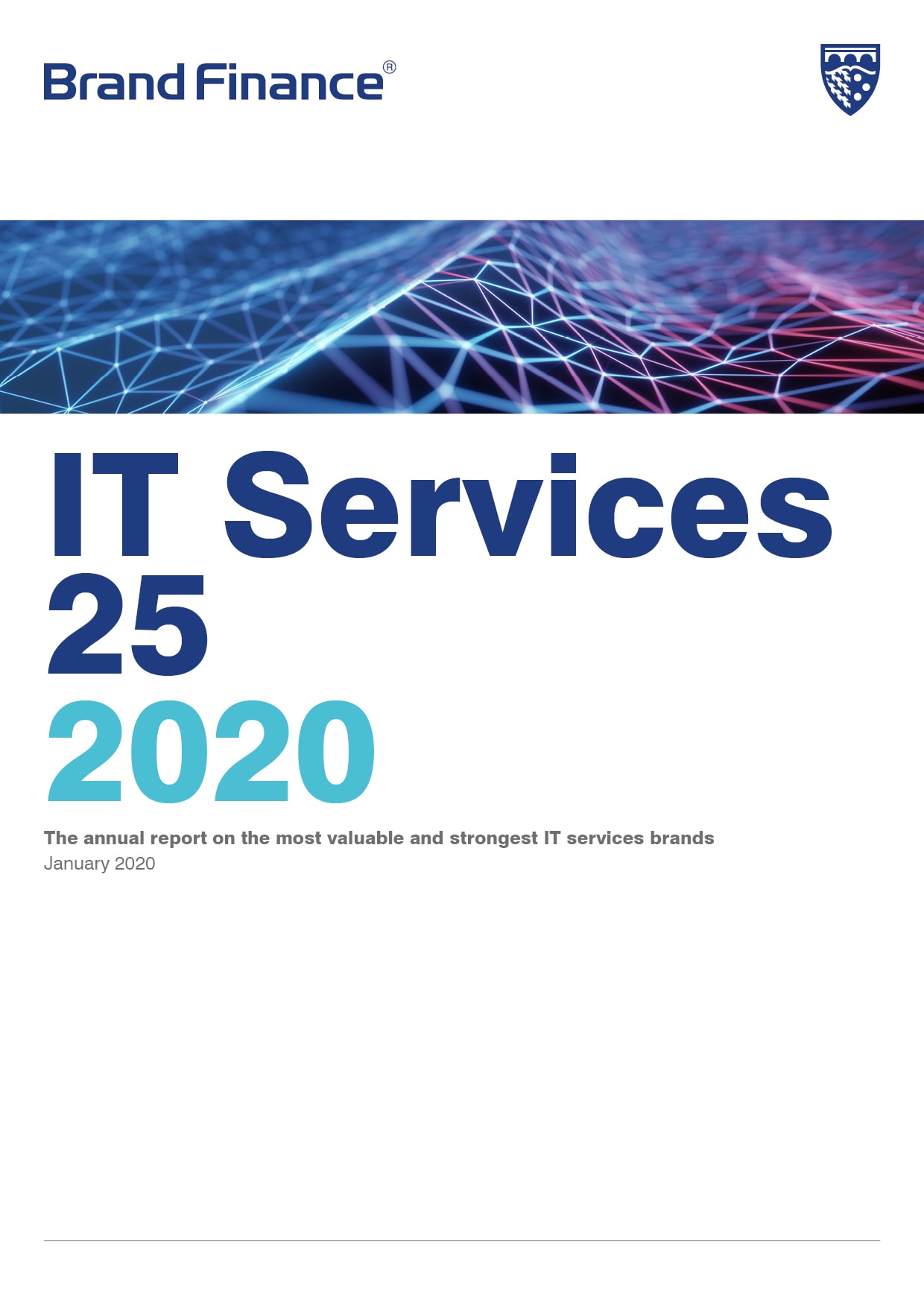Since featuring in the Brand Finance IT Services report for the first time last year, Samsung SDS has exhibited steady growth, improving its brand value by 6.5% and claiming the title of the world’s 6th fastest growing IT services brand.
With a current brand value of US$3.7billion, it is the 11th most valuable brand in the IT Services ranking, it is one of only two brands to improve its ranking in 2020. This is also reflected in the strong business performance of Samsung SDS, which recorded year-over-year revenue growth of 9.7%, outpacing the average IT services market growth. This success can be attributed to Samsung SDS’s ability to leverage emerging technologies to compete within the evolving IT services marketplace.
The brand’s strategic investment and global partnerships to combine its innovative technology are to be commended. A notable example is a roll-out of AI and IoT offering as core components of SDS's intelligent enterprise platform, Brightics™, integrated with Schneider's products to target industrial customers. Also, with a partnership with SAP, Samsung SDS has augmented its competitive edge in the digital core. Moreover, Samsung SDS has pioneered innovative supply-chain solutions such as its blockchain-based traceability solution Pega Platform™ with Samsung SDS Nexledger™ Universal, in collaboration with Tech Mahindra and Pega.
This spirit of digital transformation is reflected in the revenue of the brand’s four major IT strategic businesses, spanning across the intelligent factory, cloud, artificial intelligence & analytics, and solutions, which recorded an impressive 36% year-over-year growth.
As the only Korean IT services brand in the ranking, Samsung SDS has continued to showcase how it is not only a regional powerhouse, but also a global pioneer in the industry.
Learn more about the rapidly changing role of IT Services and find out which brands became the most valuable in 2020. Download Brand Finance IT Services 25 2020.
Interview with Sean Im

Samsung SDS is one of only two brands that increased its position in this year’s IT Services ranking – what do you think you’re doing differently from your competitors?
An IT services company's competitiveness is largely defined by the customers it serves. What sets us apart from the competition is that we have deep, strategic relationships with some of the world’s top companies, many of whom are leaders in their respective fields (e.g. Samsung Electronics). We are their strategic partner in helping to fuel technology-driven business innovations, which are then assetized into platform-based offerings that can be scaled across the industry. This also aligns with our globalization strategy. While in the past we have been focused on providing the best IT solutions to Samsung companies, today we are working with global enterprise customers to help them redefine their industry through AI, IoT, blockchain, Industry 4.0, and cybersecurity applications. Today, our non-Samsung related businesses are growing 40 to 60% annually.
What is the role of brand building and marketing in driving value for Samsung SDS? How do you go about positively engaging different stakeholders?
We no longer separate brand building, marketing, and business development activities. We believe these activities should all be driven by a common goal, which is to increase customer engagement and business growth. Our brand-building activities are deeply aligned with our marketing campaigns, which are tightly coupled to trigger business development and sales activities.
We measure our end-to-end performance, continually optimizing and tweaking how these activities all reinforce each other. We also approach our customers/partners not as IT vendors but as industry peers, openly sharing Samsung's own digital transformation experiences with them. The objective for us is to establish a joint innovation agenda that helps foster mutual growth. In this context, we are able to drive integrated marketing strategies that focus on delivering the best value to our enterprise customers, combining our Samsung device strength, SDS software/platform, and IT services capabilities to deliver the full equation.
Digital technology – including AI, IoT & blockchain - is now a key component of Samsung SDS’s strategy. What are some of your recent initiatives in this area?
Our corporate vision is to become a “Data-driven Digital Transformation Enabler” for the world's enterprises. We have continued to prioritize the development of strong industry platforms and solutions, together with leading global partners, to enhance the overall quality of our offerings. For Brightics™ IoT, our IoT platform, we have focused recently on developing a full-service model that combines Edge Computing with 5G Network capabilities.
As for Brightics™ AI, we are finding ways to provide even more features to citizen data scientists that rely on the platform. We are also developing new solutions for this platform that can be utilized in manufacturing, logistics, retail, healthcare, financial services, as well as in intelligent future workplaces. Our blockchain platform, Nexledger, has also proven highly effective in bringing down industry barriers to create new innovations. We have over 110 customers who have completed projects, supported by unique capabilities such as Nexledger Accelerator, which increases TPS by up to 10 times to make industrial applications more practical.
Where do you think IT services is going next? What disruptive trends will we see in the business in the next few years?
We believe digital disruption is just getting started. Over the next 3 to 5 years, digital transformation will be accelerated through the active adoption of disruptive technologies such as AI, IoT, blockchain, 5G, and cloud. More importantly, the confluence of these technologies will be a force multiplier. For example, the proliferation of IoT/edge sensors will enable the accumulation of cloud data on a massive scale, which will be accelerated by 5G, in turn helping to fuel and train AI.
What sets the current era apart is that while in the past one or two technology disruptors by themselves could change the rules of the game (e.g. e-Commerce), today there are 5 to 10 such technologies that are impacting the digital landscape simultaneously, providing enterprises with an unprecedented opportunity to redefine their business model. In other words, we are entering a new era where technology no longer plays a supporting role, but rather, it will be used to define a company’s overall strategy.

